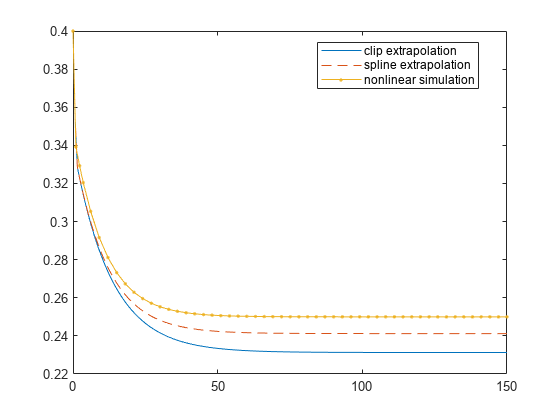ssInterpolant
Syntax
Description
For a collection of local ss models sampled in time or parameter space,
ssInterpolant builds a linear time-varying (LTV) or linear
parameter-varying (LPV) model that interpolates local LTI behaviors into global LTV or LPV
behavior. You can also use ssInterpolant to turn analytic LTV or LPV
models into gridded LTV or LPV models, or to resample gridded LTV or LPV
models.
sys = ssInterpolant(ssArray)ssArray. For this array, the ssArray.SamplingGrid
property specified the underlying time or parameter grid, which can be rectangular or
consist of scattered samples, and ssArray.Offsets specifies the
linearization offsets. (since R2024a)
Examples
Input Arguments
Output Arguments
Limitations
Scattered interpolation (since R2023b) is supported only for parameter grids up to three dimensions.

